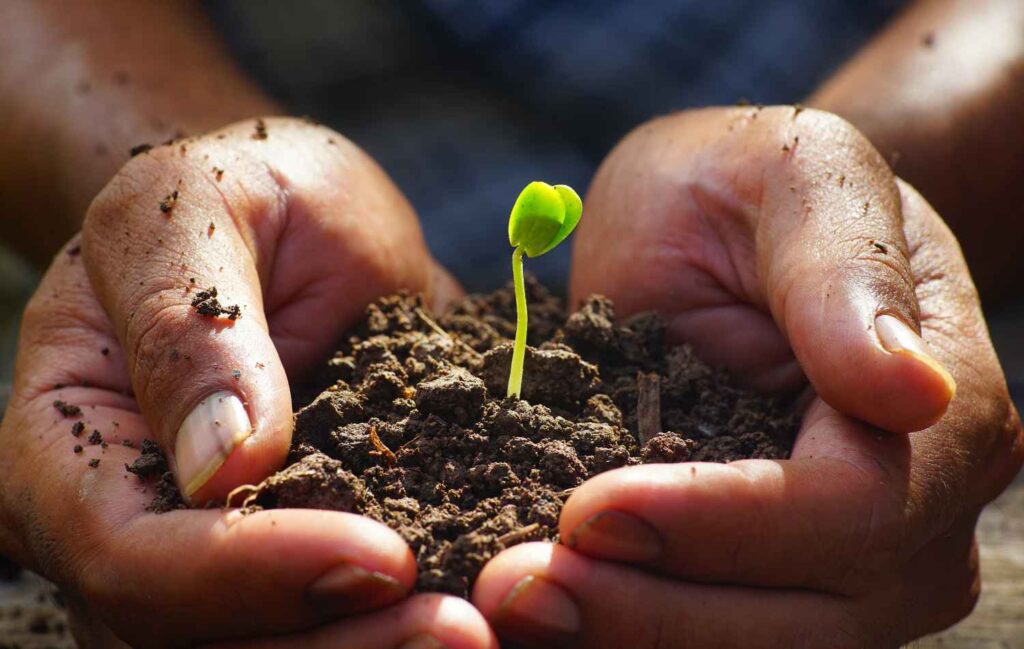
Understanding the mechanisms of plant biomass is critical for developing sustainable agriculture and advanced ecological research. Plant biomass is divided into two main categories – above-ground biomass and below-ground biomass, each fulfilling unique roles in the ecosystem and exhibiting different energy efficiencies.
How Is Energy Distributed Between Different Biomass Systems?
Plants allocate their photosynthetic energy between different parts according to evolutionary optimization principles. In the above-ground system, approximately 40-60% of energy is invested in leaves, stems, and flowers, which specialize in light capture and reproduction. In contrast, the below-ground system receives 20-40% of the total energy budget, specializing in resource acquisition and stability.
Research shows that plants growing under water stress conditions increase investment in the root system up to 70% of total biomass, while plants under abundant conditions may allocate only 15-20% to below-ground biomass.
What Is the Unique Functional Role of Above-Ground Biomass?
Above-ground biomass functions as the plant's main energy factory. Leaves, comprising 30-50% of this biomass, contain chlorophylls that enable conversion of sunlight to ATP and NADPH through photosynthesis. Their energy efficiency can reach 6% under optimal conditions.
Stems and stalks, comprising 20-40% of above-ground biomass, store carbon compounds such as cellulose (40-50% of dry weight) and lignin (15-25%), providing mechanical support and an efficient conduction system. Water transport efficiency in xylem vessels can reach 95% in mature plants.
Plant-Ditech company, founded based on technology developed by Professors Menachem Moshelion and Rony Wallach from the Hebrew University of Jerusalem – world-renowned experts in plant stress physiology and soil and water sciences, has developed advanced systems for precise measurement of this biomass.
How Does Below-Ground Biomass Function and What Is Its Energy Efficiency?
The root system exhibits unique energy efficiency based on resource acquisition strategies. Primary roots, comprising 60-70% of below-ground biomass, specialize in deep soil penetration and water uptake from distances up to 30 meters.
Root hairs, comprising only 5-10% of biomass but covering 80-90% of uptake surface area, increase nutrient uptake efficiency by 10-20 fold. This mechanism enables plants to absorb nitrogen, phosphorus, and potassium at concentrations below 1ppm.
What Are the Differences in Storage and Turnover Patterns?
Above-ground biomass is characterized by rapid turnover – leaves live an average of 30-120 days, and fruits and flowers renew several times per year. This rapid turnover allows flexible adaptation to changing environmental conditions but requires continuous energy investment.
In contrast, roots can live 2-5 years, and some tree roots persist for decades. This long-term investment enables higher energy efficiency, with each gram of below-ground biomass producing returns for 3-5 years.
What Role Do Different Systems Play in Carbon Sequestration?
Carbon sequestration studies show that above-ground biomass fixes 200-400 kg carbon per dunam per year, but most of this carbon (60-80%) returns to the atmosphere through respiration and decomposition within one to two years.
Below-ground biomass, despite fixing only 50-150 kg carbon per dunam per year, manages to store 70-90% of carbon for 5-20 years. This makes it a more efficient carbon sink in the long term.
How Do Environmental Conditions Affect Biomass Efficiency?
Under water stress conditions, above-ground biomass reduces photosynthetic efficiency by 30-70%, while below-ground biomass increases its growth and can enhance its efficiency by 50-200%. The goal of the Hebrew University professors was to combine their complementary expertise to significantly impact future food security assurance in light of global climate change.
Under nitrogen stress conditions, roots develop mycorrhizal networks that increase uptake surface area by 100-1000 fold and improve nitrogen uptake efficiency by 5-10 fold. In contrast, leaves respond by reducing chlorophyll production and impairing photosynthetic efficiency.
What Is the Practical Significance for Agriculture and Plant Cultivation?
Understanding different biomass efficiencies is vital for developing improved agricultural varieties. Varieties with efficient root systems can increase yield by 15-30% under stress conditions, while varieties with adapted leaves can improve water use efficiency by 20-40%.
Studies show that optimization of the above-ground to below-ground biomass ratio can increase total yield by 25-50% under water and nutrient stress conditions.
How Does Precise Biomass Measurement Contribute to Research and Development?
Advanced measurement systems like PlantArray enable continuous monitoring of biomass changes in real-time. The ability to precisely measure biomass distribution between different systems allows deeper understanding of evolutionary strategies and plant responses to environmental stresses.
The technology enables identification of varieties with optimal energy efficiency and determination of nutrition and irrigation protocols adapted to each stage of plant development. Developing optimal processes and technologies for improving crop yields, especially under stress, is becoming more central in the climate change era.
Why Is Understanding These Differences Critical for the Future of Agriculture?
With increasing climate change and growing world population, the need for deep understanding of biomass mechanisms becomes more critical than ever. Developing plant populations with optimal balance between above-ground and below-ground biomass can ensure food security for future generations while preserving our limited natural resources.